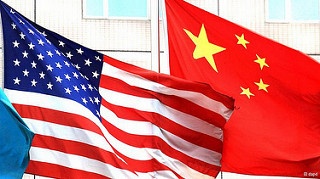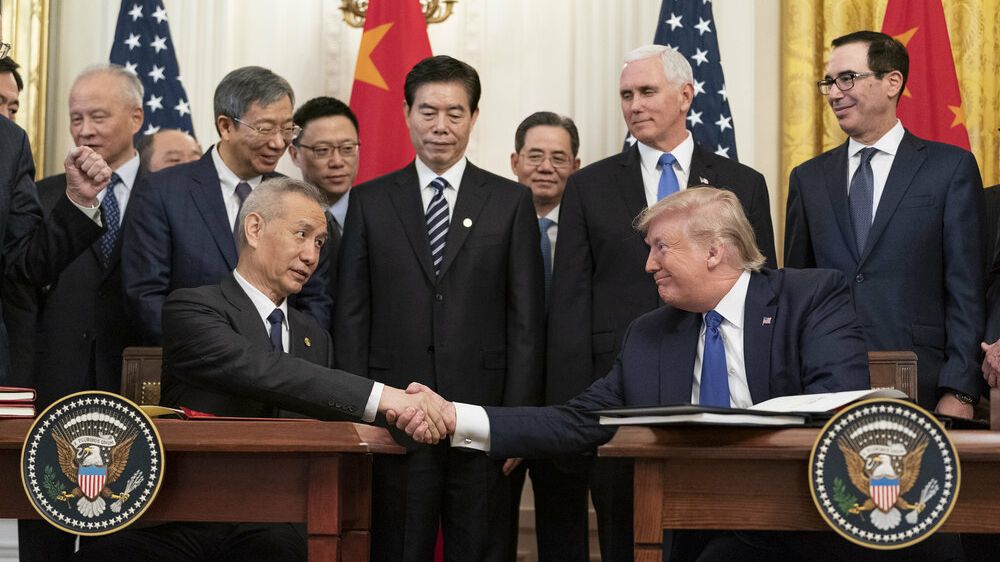Published 27 October 2018 | 8 minute read
This article outlines five possible scenarios for China and America trade, from some partial decoupling to a full unraveling of the existing trade system.
The meeting between President Donald Trump and President Xi Jinping in Argentina in late November may prove to be a turning point for global trade and the US-China relationship in particular.
Both leaders enter these discussions with the knowledge that the far more important question is whether there can be a sustainable co-existence between a Western market-driven economy with democratic ideals and a centrally-managed Chinese economy led by the Communist Party of China. If a sustainable coexistence is possible, how would it be arrived at? And if coexistence at current levels of integration is not feasible, how might things be unwound?
Given the current landscape, five potential scenarios for the US-China relationship moving forward are plausible.
1. Decoupling
The first potential scenario is decoupling. Under this scenario, everything that we’ve seen thus far — the tariffs, the retaliatory tariffs, regulatory actions taken against companies, tougher screening on FDI, etc- would prove to be the opening stages in a long-term economic decoupling between the US and China. Imports and exports would decline, foreign direct investment in both directions would drop off, supply chain linkages would weaken, and technology transfers and joint research and development activities (which are currently plentiful) would become far less common.
To be clear, a complete economic divorce between the two countries is not plausible, at least for the foreseeable future. There will continue to be US companies that find attractive returns on investment in China, China will continue to be reliant on US technology, and deeply entrenched supply chain dependencies will not be uprooted overnight. However, a substantial reversal in the steadily increasing levels of economic integration, especially over the longer term, is entirely possible.
How and why might this scenario materialize? Actually, strong arguments could be made from the perspective of both countries that decoupling is the most sensible course of action.
From China’s perspective, the argument could be made that the flurry of unilateral trade actions taken by the Trump Administration have proven that the US has become an unreliable and erratic trade partner. As a result, the primacy of the US as an export market can no longer be assumed, and more importantly, China’s reliance on US technology is no longer tenable — and in fact creates a glaring vulnerability. Therefore, the prudent course is to shrink the degree of economic interdependence between the countries.
Under this scenario, you would likely see China ramp up efforts to develop domestic technological capabilities, especially in semiconductors. Policies aimed at further increasing the portion of GDP that comes from domestic consumption would be strengthened and expanded. And to the extent that exports still matter (as they will), alternative markets would be aggressively developed in order to limit exposure to the US.
For an entirely different set of reasons, the same conclusion – decoupling — could be arrived at from the US point of view.
The argument being made – and increasingly accepted – in US policy circles is that the decision to integrate China into the global trade system has proven to be a massive miscalculation. It was assumed that China would wholeheartedly embrace both the letter and spirit of global trade rules, that any economic and labor dislocations in the US could be effectively managed, and that China would inevitably gravitate towards a smaller government role in the economy and greater political freedoms.
All of those assumptions to one degree or another have proven to be incorrect. China’s compliance with its WTO obligations has fallen short. Economic and labor dislocations in the US have been more severe than expected and efforts at smoothing the adjustments have been woefully inadequate. And the centrality of the Chinese government in the economy is if anything increasing.
According to this line of reasoning, China’s economic integration has been massively beneficial for China, but — on balance — a losing proposition for the US. Therefore, the only sensible course from the US perspective is to begin the process of reversing the economic interdependence.
Given current circumstances, there is a fairly strong likelihood that this scenario could materialize.
2. Cease fire agreement, followed by longer term peace negotiations
The second potential scenario is a cease fire agreement, followed by longer term peace negotiations. Under this scenario, the US and China would essentially press the “pause button” on their trade disputes, agree to refrain from any further escalation or trade actions, and commence a longer term negotiation on the underlying fundamental issues.
The stage is set up nicely for this scenario. The upcoming G-20 meeting in Argentina will provide an opportunity for President Trump and President Xi to meet, and we know from previous experience that President Trump likes to emerge from such meetings with grand pronouncements and major breakthroughs. The “breakthrough” in Buenos Aires could be a stand-down agreement on further escalations and the announcement of an intensified negotiating process on the underlying issues.
Then the hard work would begin. All of the specific trade disputes we currently see playing out between the US and China reflect one fundamental underlying issue: we have not yet worked out how China’s state-directed capitalism and quasi-mercantilist trade practices can be accommodated and dealt with in a trading system which has been based on ostensibly free market, free trade principles embodied in the Washington Consensus.
The challenge for negotiators would be to work out an accommodation or a modus vivendi that would allow these two different systems to coexist. If even possible, that would not be easy or quick.
The rationale for pursuing this approach would be a realization on the part of both countries that a protracted trade war would be too disruptive and destabilizing, and that the only real alternative is to find a way to live together. However, President Trump believes that maintaining the status quo would favor China’s current modus operandi.
There is fairly strong likelihood that such a scenario could materialize.
3. Quick deal
The third potential scenario would be a quick deal. Under this scenario, the US and China would arrive at a largely cosmetic agreement that would include some vague commitments from China on intellectual property and industrial policy, along with an agreement to increase purchases of US products in order to move the dial on the trade deficit. Such an agreement would be a complete waste of time. It would simply “kick the can down the road” on the fundamental underlying issues (as described above) that have to be addressed in order to permit long term stability in trade and investment relations between the two countries.
The G-20 meeting in Argentina of course also provides an amenable setting for the “quick deal” scenario to play out. The primary rationale driving this scenario would be political calculations. Thus far, the Trump Administration has judged that a hard-line stance on trade plays well politically for the President. Ifat some point higher tariffs begin to dent the rosy economic picture, and public sentiment swings against the trade war, a “quick deal” would become politically appealing. With the midterm elections complete, electoral considerations associated with the President’s 2020 re-election campaign are now front and center in the White House. A quick deal on trade with China would allow the President to “declare victory” and pivot to political narratives he judges to be more advantageous.
It is possible, but not likely, that the quick deal scenario materializes. A tougher stance on China continues to play well politically and average voters have a difficult time connecting the dots on all the costs associated with higher tariffs.
4. Protracted trench warfare
The fourth potential scenario would be protracted trench warfare.This would be in essence a “muddle through” scenario. Tariffs would remain in place, tensions would remain high, costs, headaches, and hassles associated with trade and investment would increase. Both sides would settle into a longer term period of stalemate, and businesses would adjust to the “new normal”. While there inevitably would be some degree of disruption and dislocation, the much higher level of economic disintegration described under the decoupling scenario would be avoided.
This scenario would materialize if both countries, having gotten themselves “nose to nose” in a tense trade stand-off, are unable to find palatable pathways to de-escalate. Finding themselves unable to move forward or move backward, they remain locked in stalemate. Distressingly, it would not be the first time such a scenario materialized. The 1964 “chicken war” between the US and Europe remains largely unresolved today as a result of this dynamic.
This scenario is possible but unlikely.
5. Unraveling of the existing trade system
The fifth potential scenario would be an unraveling of the existing trade system. Under this scenario, US-China trade disputes would escalate and push an already weakened WTO off the edge of the cliff. Since the WTO is the fundamental pillar of the rules-based trade system, its diminishment or destruction would largely mark the end of that system. A more ad hoc, “law of the jungle” trade system, more closely resembling the pre-GATT, pre-1948 world would likely emerge.
There are several ways this scenario could materialize, but the most accessible is the dispute settlement case against US steel and aluminum tariffs, filed by the EU, China, and others, which is slowly working its way through the WTO. Given the stakes, this case is likely to be the most important trade case in history. Both President Trump and his trade representative Robert Lighthizer have been vocal in expressing their dissatisfaction with the WTO, and have mused that the US might be better off withdrawing from that “globalist” institution. If the WTO ultimately rules against the US steel and aluminum tariffs, it would provide a plausible trigger for the US to pull out, or simply ignore the ruling. Either case would be crippling to the WTO.
Unfortunately, the picture doesn’t dramatically improve if the WTO rules in favor of the US. In that case, the WTO would in essence be providing a green light for countries to very liberally interpret the national security provisions of the WTO and to apply tariffs on almost anything.
The “unraveling” scenario is possible but unlikely. However the mere fact that we have to consider it in the realms of possibility is a striking commentary on how much and how fast the world of international trade has changed. Even just a few short years ago, the possibility of the existing trade system unraveling would have been considered absolutely absurd. Today, it cannot be ruled out.
To be clear, none of these scenarios are mutually exclusive. It’s entirely possible for one or more of these scenarios to blend together, or for more than one of these to materialize over time. And of course, things may unfold in ways not yet apparent. But based on what we know today, and given the lay of the current landscape, these five scenarios seem to be the ones to watch as we head into the Trump-Xi meeting in Argentina.
What is for certain is that there is more at stake than an agreement on trade between two countries.
© The Hinrich Foundation. See our website Terms and conditions for our copyright and reprint policy. All statements of fact and the views, conclusions and recommendations expressed in this publication are the sole responsibility of the author(s).








